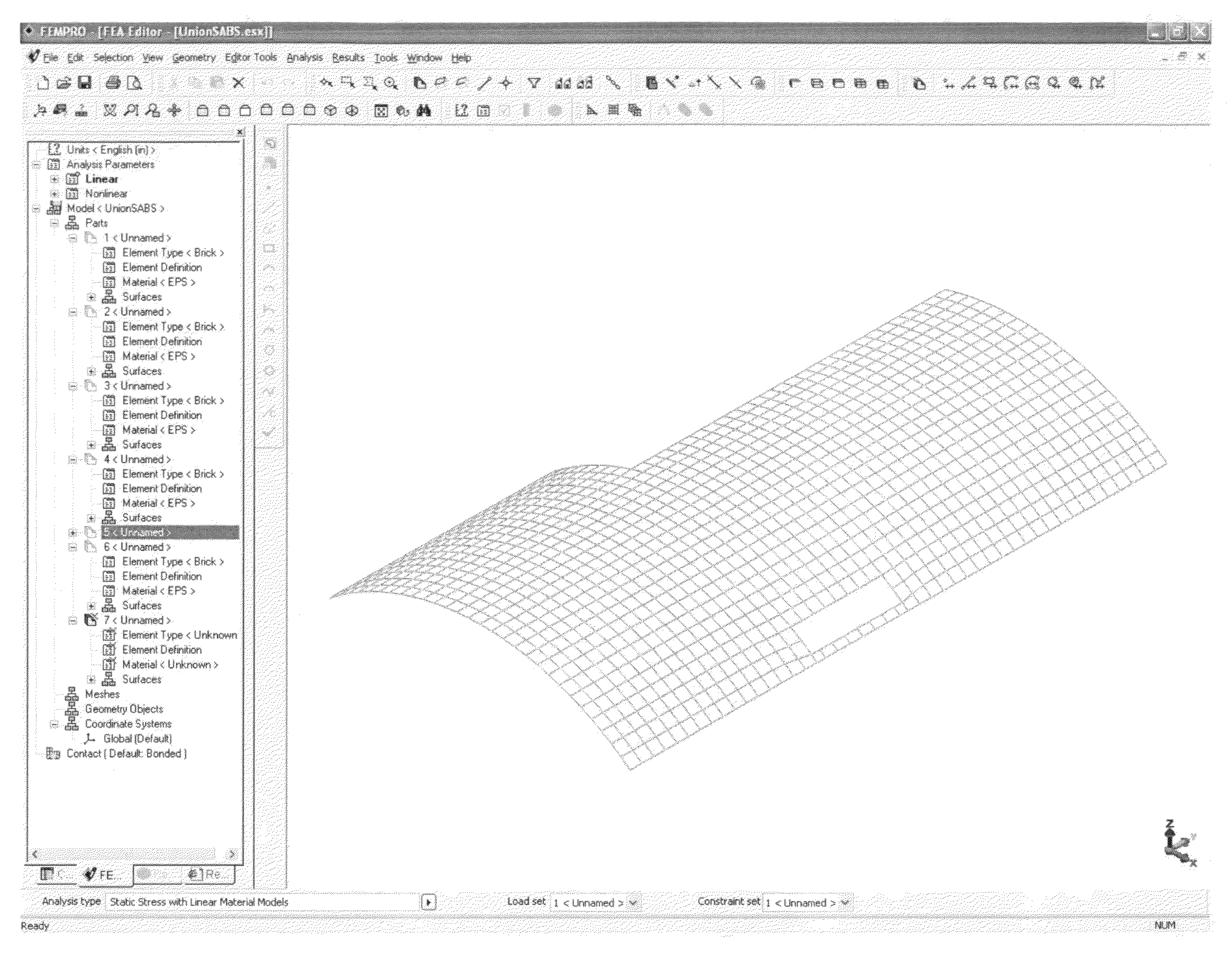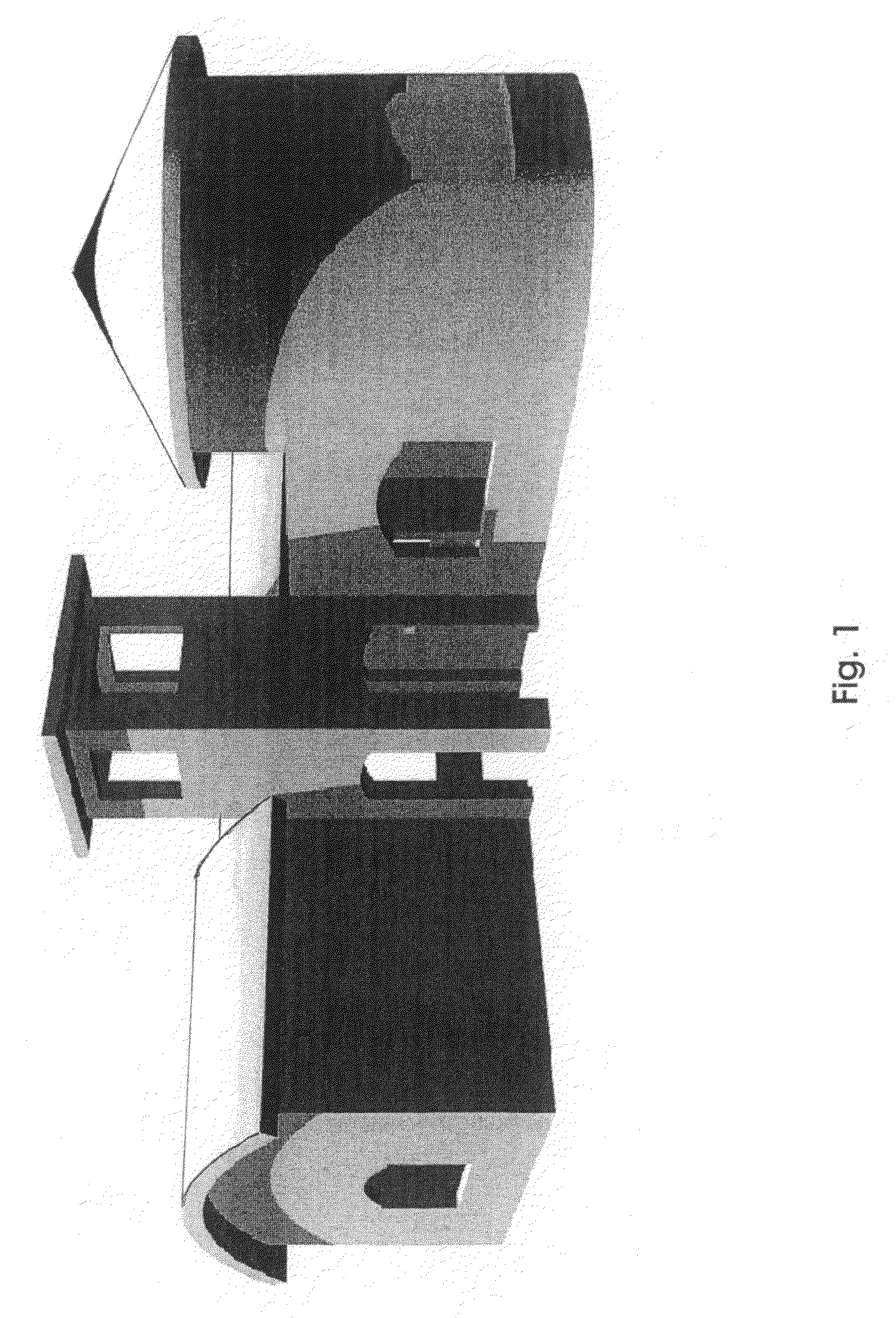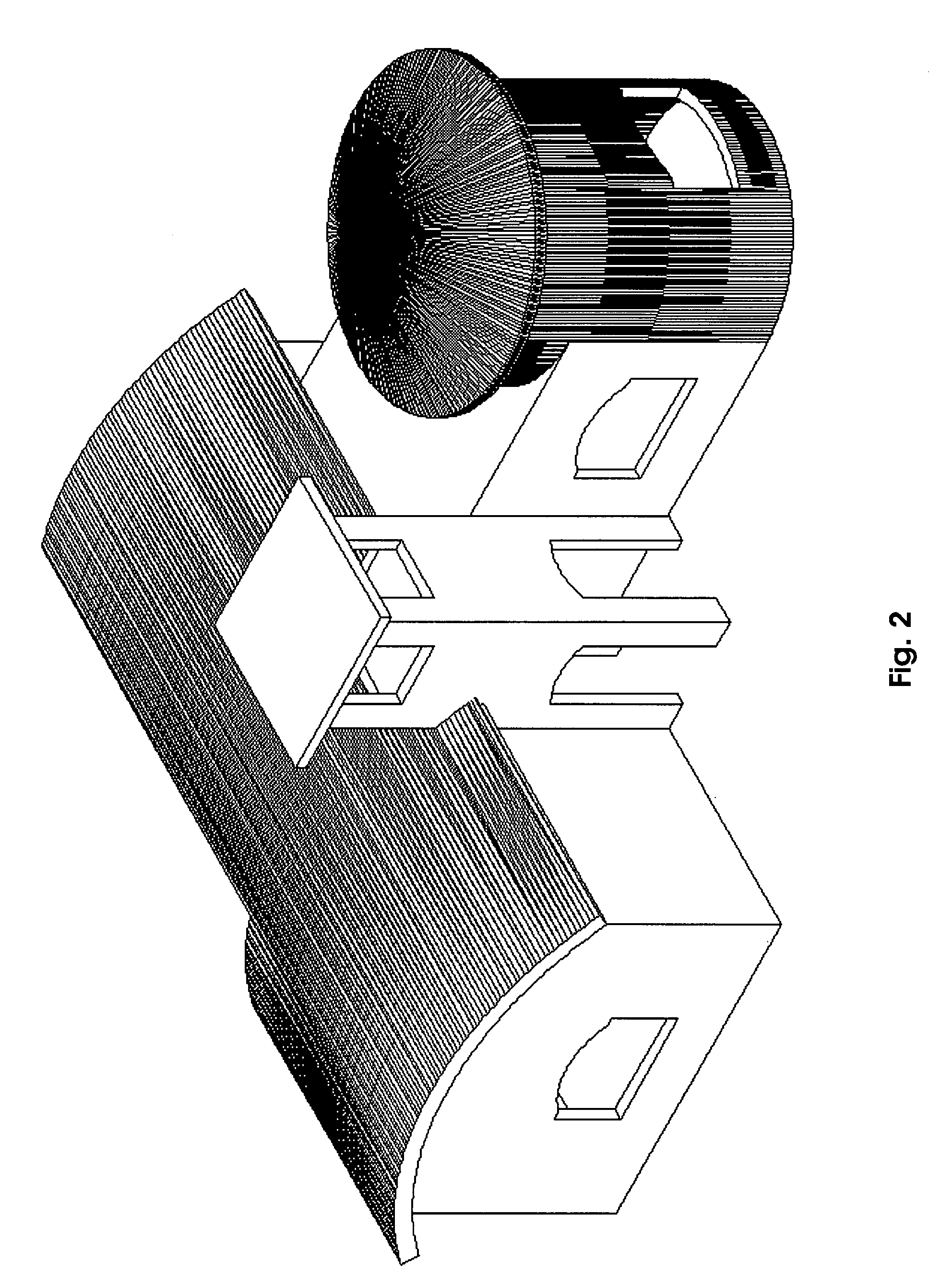Method of performing a finite element analysis of a composite structure
a composite structure and finite element analysis technology, applied in the field of composite structure finite element analysis, can solve the problems of not providing a valid solution for a complex composite structure, complex analysis of composite structures,
- Summary
- Abstract
- Description
- Claims
- Application Information
AI Technical Summary
Problems solved by technology
Method used
Image
Examples
Embodiment Construction
[0008]FIG. 1 shows the rendering of a structure or building created in 3D solid format using an AutoCAD software. The CAD program can also be a program / software, such as AutoCAD, Solidworks, Alibre, Mechanical Desktop, etc.
[0009]FIG. 2 shows the solid format of a 3D drawing constructed by Mechanical Desktop by Autodesk. When the building is created, the dimensions of the building are provided to the program by the building designer / architect.
[0010]FIG. 3 shows the exporting of the 3D CAD drawing file using a compatible format that can be exported out of the CAD program and imported by a Finite Element Analysis (FEA) program or software, such as Algor (FIG. 4). Depending on the FEA program, a different output or export format defining the solid model is selected. These formats maybe of the file type that have the extension STEP, IGES and SAT. If the building is to be worked on in pieces, STEP can be used. If the building is to be worked on in one piece or united, IGES can be used. In...
PUM
 Login to View More
Login to View More Abstract
Description
Claims
Application Information
 Login to View More
Login to View More - R&D
- Intellectual Property
- Life Sciences
- Materials
- Tech Scout
- Unparalleled Data Quality
- Higher Quality Content
- 60% Fewer Hallucinations
Browse by: Latest US Patents, China's latest patents, Technical Efficacy Thesaurus, Application Domain, Technology Topic, Popular Technical Reports.
© 2025 PatSnap. All rights reserved.Legal|Privacy policy|Modern Slavery Act Transparency Statement|Sitemap|About US| Contact US: help@patsnap.com



